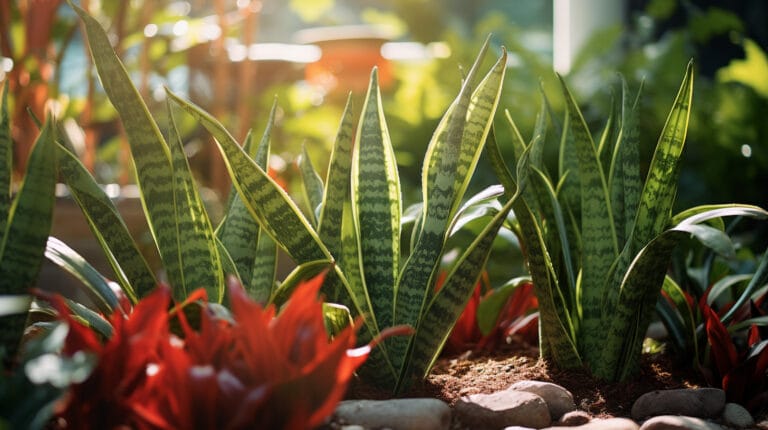What Plant Repels Roaches: A Guide To Natural Cockroach Repellent
Cockroaches can be likened to the uninvited party attendee who monopolizes the buffet and staunchly refuses to depart. Not only are they irritating, but roaches also present significant health hazards such as provoking allergies, inducing asthma attacks, and transmitting harmful bacteria. Many individuals are on a quest for natural solutions to this widespread issue, often inquiring, “Which plant can repel roaches?” in an attempt to overcome this dilemma.
Many of us instinctively reach for conventional roach treatments that are laden with harsh chemicals – a poor choice for both our health and the environment. But have you considered an eco-friendly solution? You may be surprised to discover a variety of plants that naturally repel cockroaches without compromising your family’s well-being or your eco-conscious ethos. Some of these plants may already beautify your patio.
Let’s unveil how to turn our plant passion into an unexpected yet effective barrier against these unwanted pests.
Key Takeaways
- Rosemary, mint, catnip, and lavender naturally repel cockroaches with their strong scents.
- Chrysanthemums contain pyrethrins that deter roaches.
- Lemongrass and osage orange deter roaches due to their strong fragrances.
- Garlic is another plant that effectively discourages roaches due to its pungent smell.
Understanding Cockroaches: What plant repels roaches
Cockroaches are creatures of convenience; they require food, water, warmth, darkness, and shelter. Unfortunately, these resources are abundant in our homes. Roaches are opportunistic feeders that eat anything, including plants, garbage, soap, and glue.
Plants with strong odors are effective repellents for these pests. Rosemary, for example, releases a scent that overwhelms the olfactory senses of roaches. Rosemary is also arid, offering insufficient moisture to these pests.
Mint is another potent roach deterrent. The sharp fragrance of mint is unbearable for roaches. You can use mint oil or grow it in your house or garden.
Chrysanthemums are not only pretty but also contain a substance called pyrethrins that roaches find repulsive.
Osage orange fruit can be utilized to repel pests, including roaches, spiders, and flies.
Meanwhile, catnip wards off these critters due to a compound called nepetalactone, which roaches find offensive.
Therefore, growing these plants can help manage roach infestations naturally, without resorting to harmful insecticides, providing a safer and healthier environment in our homes.
Best Plants That Repel Roaches
This section will explore the strategic plants that can deter roaches effectively and decorate your home simultaneously.
Rosemary
A rosemary plant is a cockroach’s nemesis. Its aroma is repellant to roaches. The good news is rosemary plants are easy to grow. They require minimal water, can be hung in closets, or their oils can be placed in small containers around the house. This herb is an eco-friendly solution to your roach problems.
Bay Leaf
Bay leaves distressed roaches due to their potent aroma. Contrarily, humans find it pleasant. These leaves can be grown indoors or outdoors, requiring bright light and well-draining soil. Besides, they add a touch of greenery to your home and work as an effective roach repellent.
Mint
Mint is an ally in our war against roaches. The strong fragrance of mint repulses roaches and other pests while pleasing us. Mint can be grown outdoors or in pots indoors. Mint oil is also advantageous since it can be placed around the house, especially in areas where roaches enter or hide.
Lavender
Lavender, with its pleasing fragrance, deters roaches. You can hang dried lavender bundles or use lavender oil in diffusers. Positioning lavender on window sills can serve as a first line of defense. Other pests, such as moths and flies, are also repelled by lavender. It’s a safer alternative than chemical pesticides.
Catnip
Catnip is a herb that is naturally repellant to roaches due to nepetalactone, which also deters other pests like ants, aphids, and flea beetles. Catnip doesn’t require much water to thrive; hence, tactically growing some in your garden or placing dried catnip leaves is an effective roach deterrent.
Lemongrass
Lemongrass, courtesy of its citronella oil content, emanates a strong citrus scent that discourages roaches, flies, mosquitoes, mice, and snakes. Including lemongrass around your home naturally deters these pests.
Chrysanthemums
Chrysanthemums, beautiful flowering plants, contain a natural repellant compound for pesky insects called pyrethrins. Growing these plants, which require at least 6 hours of sunlight, regular watering, and well-draining soils, can help keep roaches away.
Osage Orange
Osage orange is a plant that discourages roaches, flies, and spiders. Its extracts can be used in diffusers, offering a natural and eco-friendly pest control solution.
Garlic
The potent smell of garlic repels cockroaches. Crushed garlic cloves or a solution of crushed garlic in water can be used across the house, especially where roach activity is noticeable, offering a strong deterrent against these pests.
Additional Ways to Naturally Repel Roaches
Apart from planting roach-repellant plants, there are several other strategies to naturally discourage roaches:
- Maintain cleanliness.
- Seal small openings or cracks in your home.
- Use a soap-water mixture to clean surfaces.
- Use baits or traps.
- Use non-toxic substances such as diatomaceous earth.
How to Use These Plants Effectively Against Roaches
Using these plants practically to prevent roaches involves:
- Planting these herbs near windows and doors.
- Placing dried herbs in cupboards and drawers.
- Spraying lemongrass-infused water around the house.
- Using chrysanthemum-based sprays for immediate results.
- Storing garlic cloves or slices where roaches are a problem.
After discovering the natural wonders of repelling cockroaches, continue your journey to a pest-free home by exploring our guide on how to get rid of earwigs next!
Conclusion
Using plants is a natural, effective way to keep cockroaches away. While plants alone may not eradicate an infestation, they can be used alongside other pest control techniques for more effective results.
It’s time to create a bug-free home with the power of nature!
FAQs
What are the best plants that repel cockroaches?
The best plants to repel roaches include mint, catnip, lemongrass, and bay-leaf plants.
How do these plants keep roaches away?
Essential oils from these plants release an aroma that repels bugs.
Can I use these plants indoors?
Indoor plants like potted mint or bay leaves can help discourage roaches.
Are there other uses for these repellant herbs?
Many aromatic herbs can be used in cooking or tea-making.
Do all outdoor plants repel pests?
Not all, only specific ones like the osage orange ward off pests.
Are there risks to using these repellent herbs at home?
Some plants may be toxic to pets. Please check before placing them in pet-accessible areas.







